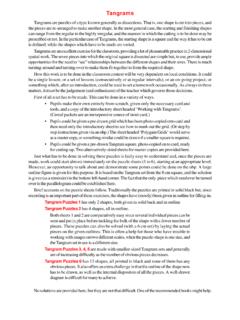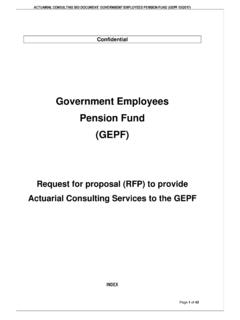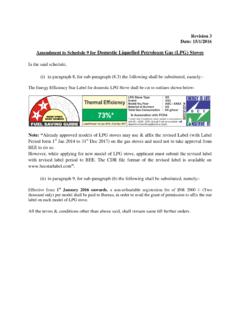Transcription of About the Tutorial
1 I About the Tutorial CSS is used to control the style of a web document in a simple and easy way. CSS stands for Cascading Style Sheets. This Tutorial covers both the versions CSS1 and CSS2 and gives a complete understanding of CSS, starting from its basics to advanced concepts. Audience This Tutorial will help both students as well as professionals who want to make their websites or personal blogs more attractive. Prerequisites You should be familiar with: Basic word processing using any text editor. How to create directories and files. How to navigate through different directories. Internet browsing using popular browsers like Internet Explorer or Firefox. Developing simple Web Pages using HTML or XHTML. If you are new to HTML and XHTML, then we would suggest you to go through our HTML Tutorial or XHTML Tutorial first.
2 Copyright & Disclaimer Copyright 2017 by tutorials Point (I) Pvt. Ltd. All the content and graphics published in this e-book are the property of tutorials Point (I) Pvt. Ltd. The user of this e-book is prohibited to reuse, retain, copy, distribute or republish any contents or a part of contents of this e-book in any manner without written consent of the publisher. We strive to update the contents of our website and tutorials as timely and as precisely as possible, however, the contents may contain inaccuracies or errors. tutorials Point (I) Pvt. Ltd. provides no guarantee regarding the accuracy, timeliness or completeness of our website or its contents including this Tutorial . If you discover any errors on our website or in this Tutorial , please notify us at ii Table of Contents About the Tutorial .. Audience.
3 I Prerequisites .. i Copyright & Disclaimer .. i Table of Contents .. ii 1. CSS OVERVIEW .. 1 What is CSS? .. 1 Advantages of CSS .. 1 Who Creates and Maintains CSS? .. 1 CSS Versions .. 2 2. CSS SYNTAX .. 3 The Type Selectors .. 3 The Universal Selectors .. 3 The Descendant Selectors .. 4 The Class Selectors .. 4 The ID Selectors .. 4 The Child Selectors .. 5 The Attribute Selectors .. 5 Multiple Style Rules .. 6 Grouping Selectors .. 6 3. CSS INCLUSION .. 8 Embedded CSS - The <style> Element .. 8 Attributes .. 8 Inline CSS - The style Attribute .. 9 Attributes .. 9 iii External CSS - The <link> Element .. 9 Attributes .. 10 Imported CSS - @import Rule .. 11 CSS Rules Overriding .. 11 Handling Old Browsers .. 12 CSS Comments .. 12 4. CSS MEASUREMENT UNITS .. 13 5. CSS COLORS .. 14 CSS Colors - Hex Codes .. 14 CSS Colors - Short Hex Codes.
4 15 CSS Colors - RGB 16 Building Color Codes .. 16 Browser Safe Colors .. 16 6. CSS BACKGROUND .. 20 7. CSS FONTS .. 23 Set the Font Family .. 23 Set the Font Style .. 23 Set the Font Variant .. 24 Set the Font Weight .. 24 Set the Font Size .. 24 Set the Font Size Adjust .. 25 Set the Font Stretch .. 25 Shorthand Property .. 26 8. CSS TEXT .. 27 Set the Text Color .. 27 iv Set the Text Direction .. 28 Set the Space between Characters .. 28 Set the Space between Words .. 28 Set the Text Indent .. 29 Set the Text Alignment .. 29 Decorating the Text .. 30 Set the Text Cases .. 30 Set the White Space between Text .. 31 Set the Text Shadow .. 31 9. CSS IMAGES .. 32 The Image Border Property .. 32 The Image Height Property .. 32 The Image Width Property .. 33 The -moz-opacity Property .. 34 10. CSS LINKS .. 36 Set the Color of 36 Set the Color of Visited Links.
5 37 Change the Color of Links when Mouse is Over .. 37 Change the Color of Active Links .. 37 11. CSS TABLES .. 38 The order-collapse Property .. 38 The border-spacing Property .. 39 The caption-side Property .. 41 The empty-cells Property .. 43 The table-layout Property .. 44 v 12. CSS BORDERS .. 46 The border-color Property .. 46 The border-style Property .. 47 The border-width Property .. 49 Border Properties Using Shorthand .. 50 13. CSS MARGINS .. 52 The Margin Property .. 52 The margin-bottom Property .. 53 The margin-top Property .. 54 The margin-left Property .. 54 The margin-right Property .. 55 14. CSS LISTS .. 56 The list-style-type Property .. 56 The list-style-position Property .. 59 The list-style-image Property .. 60 The list-style Property .. 61 The marker-offset Property .. 62 15. CSS PADDINGS .. 63 The padding-bottom Property.
6 63 The padding-top Property .. 64 The padding-left Property .. 64 The padding-right Property .. 65 The Padding Property .. 65 16. CSS CURSORS .. 67 vi 17. CSS OUTLINES .. 70 The outline-width Property .. 70 The outline-style Property .. 71 The outline-color Property .. 72 The Outline Property .. 73 18. CSS DIMENSION .. 74 The Height and Width Properties .. 74 The line-height Property .. 75 The max-height 75 The min-height Property .. 76 The max-width Property .. 77 The min-width Property .. 77 19. CSS SCROLLBARS .. 79 20. CSS VISIBILITY .. 81 21. CSS POSITIONING .. 82 Relative Positioning .. 82 Absolute Positioning .. 82 Fixed Positioning .. 83 22. CSS LAYERS .. 84 23. CSS PSEUDO CLASSES .. 86 The :link pseudo-class .. 87 The :visited pseudo-class .. 87 The :hover pseudo-class .. 87 The :active pseudo-class .. 88 The :focus pseudo-class.
7 88 vii The :first-child pseudo-class .. 88 The :lang pseudo-class .. 89 24. CSS PSEUDO ELEMENTS .. 91 The :first-line pseudo-element .. 91 The :first-letter pseudo-element .. 92 The :before pseudo-element .. 92 The :after pseudo-element .. 93 25. CSS @ RULES .. 95 The @import Rule .. 95 The @charset Rule .. 95 The @font-face Rule .. 96 The !important Rule .. 97 26. CSS 98 Alpha Channel .. 98 Motion Blur .. 99 Chroma Filter .. 101 Drop Shadow Effect .. 102 Flip Effect .. 103 Glow Effect .. 104 Grayscale Effect .. 105 Invert Effect .. 106 Mask Effect .. 107 Shadow Filter .. 108 Wave Effect .. 110 X-Ray Effect .. 111 viii 27. CSS MEDIA TYPES .. 112 The @media rule .. 112 The Document Language .. 112 Recognized Media Types .. 113 28. CSS PAGED MEDIA .. 115 Defining Pages: The @page Rule .. 115 Setting Page Size .. 116 Left, Right, and First Pages.
8 117 Controlling Pagination .. 118 Controlling Widows and Orphans .. 119 29. CSS AURAL MEDIA .. 120 The azimuth Property .. 121 The elevation Property .. 122 The cue-after Property .. 123 The cue-before Property .. 123 The cue Property .. 124 The pause-after Property .. 124 The pause-before Property .. 124 The pause Property .. 124 The pitch Property .. 125 The pitch-range Property .. 125 The play-during Property .. 125 The richness 126 The speak Property .. 126 The speak-numeral Property .. 127 The speak-punctuation Property .. 127 ix The speech-rate Property .. 127 The stress Property .. 127 The voice-family Property .. 128 The volume Property .. 128 30. CSS PRINTING .. 129 31. CSS LAYOUTS .. 130 Sample Column Layout .. 131 32. CSS VALIDATIONS .. 134 Why Validate Your HTML Code? .. 134 33. CSS2 REFERENCE GUIDE .. 135 Pseudo-classes & Pseudo-elements.
9 142 34. COLOR REFERENCES .. 143 10 What is CSS? Cascading Style Sheets, fondly referred to as CSS, is a simple design language intended to simplify the process of making web pages presentable. CSS handles the look and feel part of a web page. Using CSS, you can control the color of the text, the style of fonts, the spacing between paragraphs, how columns are sized and laid out, what background images or colors are used, as well as a variety of other effects. CSS is easy to learn and understand but it provides a powerful control over the presentation of an HTML document. Most commonly, CSS is combined with the markup languages HTML or XHTML. Advantages of CSS CSS saves time - You can write CSS once and then reuse the same sheet in multiple HTML pages. You can define a style for each HTML element and apply it to as many web pages as you want.
10 Pages load faster - If you are using CSS, you do not need to write HTML tag attributes every time. Just write one CSS rule of a tag and apply it to all the occurrences of that tag. So, less code means faster download times. Easy maintenance - To make a global change, simply change the style, and all the elements in all the web pages will be updated automatically. Superior styles to HTML - CSS has a much wider array of attributes than HTML, so you can give a far better look to your HTML page in comparison to HTML attributes. Multiple Device Compatibility - Style sheets allow content to be optimized for more than one type of device. By using the same HTML document, different versions of a website can be presented for handheld devices such as PDAs and cellphones or for printing. Global web standards Now HTML attributes are being deprecated and it is being recommended to use CSS.















